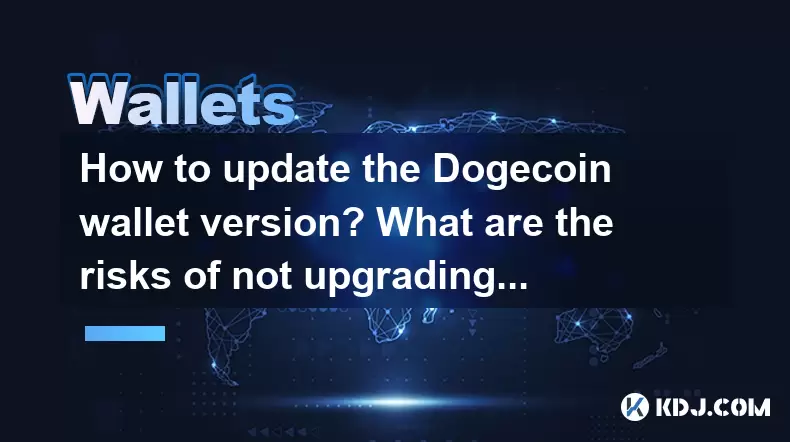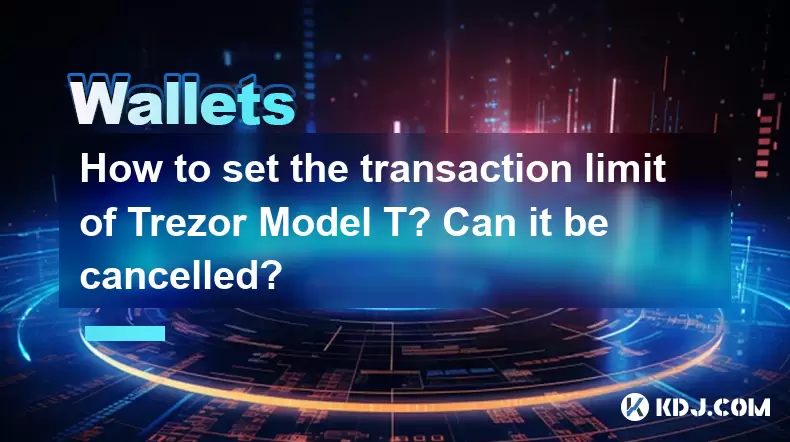-
 Bitcoin
Bitcoin $103,243.7406
3.45% -
 Ethereum
Ethereum $2,335.3701
20.03% -
 Tether USDt
Tether USDt $0.9999
-0.03% -
 XRP
XRP $2.3932
8.33% -
 BNB
BNB $633.7730
3.06% -
 Solana
Solana $168.4639
8.84% -
 USDC
USDC $1.0001
0.01% -
 Dogecoin
Dogecoin $0.2074
12.81% -
 Cardano
Cardano $0.7919
9.96% -
 TRON
TRON $0.2592
3.07% -
 Sui
Sui $3.9942
6.90% -
 Chainlink
Chainlink $16.1425
8.53% -
 Avalanche
Avalanche $23.1914
10.37% -
 Stellar
Stellar $0.3033
10.18% -
 Shiba Inu
Shiba Inu $0.0...01541
14.48% -
 Hedera
Hedera $0.2020
8.09% -
 Hyperliquid
Hyperliquid $25.0754
14.00% -
 Bitcoin Cash
Bitcoin Cash $413.4478
-0.41% -
 Toncoin
Toncoin $3.2709
4.75% -
 UNUS SED LEO
UNUS SED LEO $8.7352
-0.75% -
 Litecoin
Litecoin $98.2522
6.16% -
 Polkadot
Polkadot $4.6469
8.95% -
 Monero
Monero $304.6089
2.04% -
 Pepe
Pepe $0.0...01308
41.65% -
 Dai
Dai $1.0001
-0.01% -
 Pi
Pi $0.7540
21.13% -
 Bitget Token
Bitget Token $4.5203
4.24% -
 Ethena USDe
Ethena USDe $1.0002
-0.02% -
 Uniswap
Uniswap $6.3627
22.19% -
 Bittensor
Bittensor $431.6840
6.74%
How to develop your own Bitcoin wallet?
Understanding the types of Bitcoin wallets is crucial for selecting the appropriate option based on security and convenience requirements, including software, hardware, paper, and multi-signature wallets.
Feb 21, 2025 at 05:00 am

Key Points:
- Understanding the Types of Bitcoin Wallets
- Choosing a Development Approach
- Assembling the Necessary Resources
- Designing the Wallet Architecture
- Implementing the Core Functions
- Integrating Security Measures
- Testing and Debugging the Wallet
- Deploying and Maintaining the Wallet
Understanding the Types of Bitcoin Wallets
Bitcoin wallets come in various forms, each with its own advantages and disadvantages:
- Software Wallets (Hot Wallets): Stored on a computer or mobile device, providing convenience and accessibility but with increased susceptibility to hacking.
- Hardware Wallets (Cold Wallets): Physical devices specifically designed for storing cryptocurrency, offering enhanced security but reduced convenience.
- Paper Wallets: Private and public keys printed on paper, providing the highest level of security but less user-friendliness.
- Multi-Signature Wallets: Require multiple signatures to authorize transactions, increasing security but potentially complicating transactions.
Choosing a Development Approach
Developers can choose between two main approaches for building a Bitcoin wallet:
- From Scratch: Writing the entire wallet codebase from the ground up, providing maximum customization but requiring extensive knowledge and effort.
- Utilizing a Development Framework: Utilizing existing frameworks such as BIP39 and HD Wallets, reducing development time but limiting customization options.
Assembling the Necessary Resources
Developing a Bitcoin wallet requires various tools and resources:
- Programming Languages: Proficiency in Python, C++, or Java is crucial.
- Cryptocurrency Libraries: Utilizing libraries like Bitcoinj or libbitcoin simplifies interaction with the Bitcoin network.
- Code Editors and IDEs: Tools like Visual Studio Code or PyCharm provide code completion and debugging capabilities.
Designing the Wallet Architecture
The wallet architecture involves defining the:
- User Interface: Designing an intuitive and user-friendly interface for managing funds.
- Wallet Logic: Creating a secure and efficient system for storing and accessing Bitcoin.
- Security Mechanisms: Implementing encryption, multi-factor authentication, and other security features to protect user funds.
Implementing the Core Functions
Implementing core wallet functions, including:
- Transaction Management: Sending, receiving, and monitoring Bitcoin transactions.
- Address Generation: Generating unique Bitcoin addresses for receiving funds.
- Key Management: Storing and managing private and public keys securely.
Integrating Security Measures
Ensuring the wallet's security by implementing:
- Encryption: Encrypting private keys and sensitive information to protect against unauthorized access.
- Authentication: Requiring passwords, PIN codes, or biometric authentication for accessing the wallet.
Testing and Debugging the Wallet
Thoroughly testing the wallet to identify and fix potential bugs, including:
- Unit Tests: Testing individual wallet functions in isolation.
- Integration Tests: Verifying the interaction between different wallet components.
- Security Audits: Enlisting external security experts to assess the wallet's vulnerability.
Deploying and Maintaining the Wallet
Deploying and maintaining the finished wallet, including:
- Distribution: Making the wallet available for download or installation.
- Maintenance: Providing ongoing support and updates to address new security threats and user requirements.
FAQs
What are the best programming languages for developing a Bitcoin wallet?
- Python, C++, and Java are commonly used due to their versatility and compatibility with cryptocurrency libraries.
How can I ensure the security of my Bitcoin wallet?
- Implement encryption, multi-factor authentication, and securely store private keys to protect against unauthorized access.
What type of wallet should I choose for maximum security?
- Hardware wallets (cold wallets) offer the highest level of security as they are not connected to the internet.
How can I develop a wallet from scratch without experience?
- Consider utilizing development frameworks like BIP39 and HD Wallets, which provide a starting point and reduce complexity.
What is the best way to test a Bitcoin wallet before releasing it?
- Conduct thorough unit and integration tests, and engage with external security auditors to identify potential vulnerabilities.
Disclaimer:info@kdj.com
The information provided is not trading advice. kdj.com does not assume any responsibility for any investments made based on the information provided in this article. Cryptocurrencies are highly volatile and it is highly recommended that you invest with caution after thorough research!
If you believe that the content used on this website infringes your copyright, please contact us immediately (info@kdj.com) and we will delete it promptly.
- Dogecoin Price is Climbing toward $0.20
- 2025-05-09 19:05:14
- Dogecoin (DOGE) Price Prediction: What's Driving DOGE's Current Price Surge?
- 2025-05-09 19:05:14
- Sui (SUI) Integrates with Axelar Network to Unlock Cross-Chain Interoperability
- 2025-05-09 19:00:13
- Bitcoin (BTC) Reaches the Psychological Price Level of $100,000
- 2025-05-09 19:00:13
- Pectra: Ethereum Takes a Transformative Leap Forward, Opening New Markets and Redefining the Stack
- 2025-05-09 18:55:12
- Coinbase Q1:- The leading crypto exchange Coinbase has released it Quarterly report for Q1 2025.
- 2025-05-09 18:55:12
Related knowledge

How to update the Dogecoin wallet version? What are the risks of not upgrading?
May 09,2025 at 06:56pm
Updating your Dogecoin wallet to the latest version is crucial for maintaining security, accessing new features, and ensuring compatibility with the network. This guide will walk you through the process of updating your Dogecoin wallet and highlight the risks associated with not upgrading. Checking Your Current Dogecoin Wallet VersionBefore you can upda...

How to create a Dogecoin wallet? What are the steps to store Dogecoin safely?
May 09,2025 at 05:07pm
Creating a Dogecoin wallet and ensuring the safety of your Dogecoin are essential steps for anyone interested in participating in the cryptocurrency ecosystem. Dogecoin, originally created as a meme-inspired cryptocurrency, has gained significant traction and requires secure management to protect your investments. This article will guide you through the...

How to set the transaction limit of Trezor Model T? Can it be cancelled?
May 09,2025 at 10:35am
Setting the transaction limit on a Trezor Model T is an essential feature for users who want to enhance their security and manage their cryptocurrency transactions more effectively. This guide will walk you through the detailed steps to set a transaction limit on your Trezor Model T, as well as how to cancel it if needed. Understanding Transaction Limit...

How to generate a new address with Trezor Model T? Is there an upper limit?
May 09,2025 at 07:36am
Introduction to Trezor Model TThe Trezor Model T is a highly respected hardware wallet in the cryptocurrency community, known for its robust security features and user-friendly interface. It supports a wide range of cryptocurrencies and allows users to manage their digital assets securely. One of the essential functions of any hardware wallet is the abi...

How to enable Tor for Trezor Model T? Will the speed be slower?
May 09,2025 at 05:14pm
Enabling Tor on your Trezor Model T provides an additional layer of privacy and security by routing your transactions through the Tor network. This guide will walk you through the process of enabling Tor on your Trezor Model T and discuss the potential impact on transaction speed. Preparing Your Trezor Model T for TorBefore you begin, ensure that your T...

How to export the transaction history of Trezor Model T? What is the format?
May 09,2025 at 07:14pm
Introduction to Trezor Model T Transaction HistoryTrezor Model T is a popular hardware wallet that provides a secure way to store and manage your cryptocurrencies. One of the essential features of any cryptocurrency wallet is the ability to export transaction history. This allows users to keep track of their transactions, monitor their financial activit...

How to update the Dogecoin wallet version? What are the risks of not upgrading?
May 09,2025 at 06:56pm
Updating your Dogecoin wallet to the latest version is crucial for maintaining security, accessing new features, and ensuring compatibility with the network. This guide will walk you through the process of updating your Dogecoin wallet and highlight the risks associated with not upgrading. Checking Your Current Dogecoin Wallet VersionBefore you can upda...

How to create a Dogecoin wallet? What are the steps to store Dogecoin safely?
May 09,2025 at 05:07pm
Creating a Dogecoin wallet and ensuring the safety of your Dogecoin are essential steps for anyone interested in participating in the cryptocurrency ecosystem. Dogecoin, originally created as a meme-inspired cryptocurrency, has gained significant traction and requires secure management to protect your investments. This article will guide you through the...

How to set the transaction limit of Trezor Model T? Can it be cancelled?
May 09,2025 at 10:35am
Setting the transaction limit on a Trezor Model T is an essential feature for users who want to enhance their security and manage their cryptocurrency transactions more effectively. This guide will walk you through the detailed steps to set a transaction limit on your Trezor Model T, as well as how to cancel it if needed. Understanding Transaction Limit...

How to generate a new address with Trezor Model T? Is there an upper limit?
May 09,2025 at 07:36am
Introduction to Trezor Model TThe Trezor Model T is a highly respected hardware wallet in the cryptocurrency community, known for its robust security features and user-friendly interface. It supports a wide range of cryptocurrencies and allows users to manage their digital assets securely. One of the essential functions of any hardware wallet is the abi...

How to enable Tor for Trezor Model T? Will the speed be slower?
May 09,2025 at 05:14pm
Enabling Tor on your Trezor Model T provides an additional layer of privacy and security by routing your transactions through the Tor network. This guide will walk you through the process of enabling Tor on your Trezor Model T and discuss the potential impact on transaction speed. Preparing Your Trezor Model T for TorBefore you begin, ensure that your T...

How to export the transaction history of Trezor Model T? What is the format?
May 09,2025 at 07:14pm
Introduction to Trezor Model T Transaction HistoryTrezor Model T is a popular hardware wallet that provides a secure way to store and manage your cryptocurrencies. One of the essential features of any cryptocurrency wallet is the ability to export transaction history. This allows users to keep track of their transactions, monitor their financial activit...
See all articles






















































































